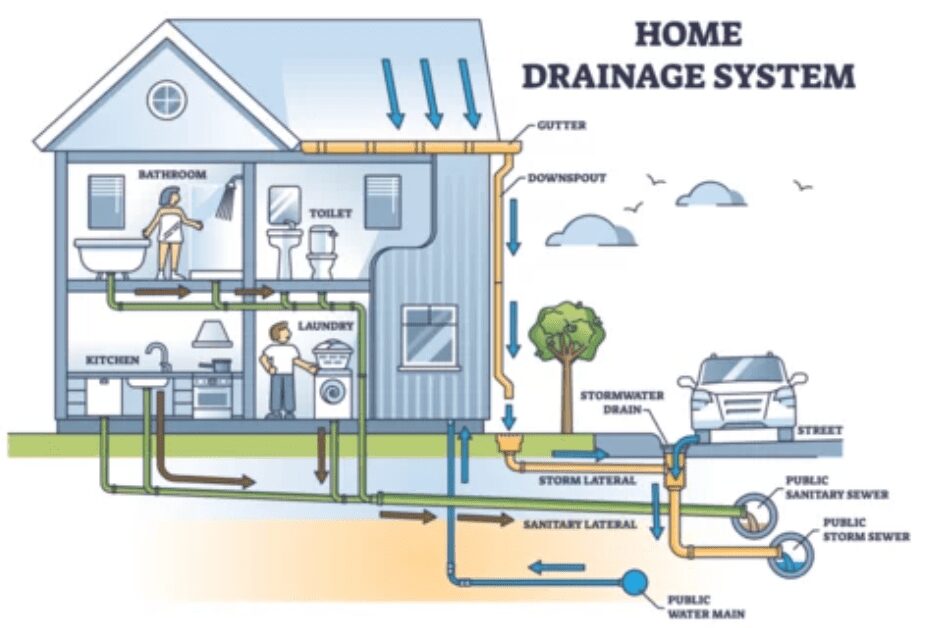
The significance of a well-functioning house drain system often goes unnoticed until an issue arises. As the adage goes, “Out of sight, out of mind,” but ignorance isn’t bliss in the context of home infrastructure.
A drainage plumbing diagram is crucial for homeowners to understand the layout of their drainage system. It helps in determining the placement of various components and ensures compliance with regulations.
A deep knowledge of the intricate components of a house drain system is an asset for every homeowner. Let us delve into the fascinating details of a house drain system’s parts and their placement.
Understanding the House Drain System
A house drain system is a complex network of interconnected components transporting waste and water away from your home. This system efficiently manages waste and protects health and safety.
Each element of the house drain system, including drainage plumbing diagrams used by homeowners and licensed plumbing contractors, plays a crucial role, contributing to the overall house drainage system’s effectiveness.
How does the Drainage System work?
A drainage system is a pipe network that carries water and wastes away from a building or an area. Different types of drainage pipe systems depend on the source and quality of the water they transport.
The main sewer line is the primary conduit that ensures the flow of water and waste from the property to the sewer clean-out for emergency cleaning and removing major clogs in the main drain.
Some standard drainage systems are:
-
Foul drainage system
This system collects and transports wastewater from sinks, toilets, showers, washing machines, and other water-using appliances. The wastewater contains organic matter, bacteria, chemicals, and other pollutants that must be treated before being discharged into the environment. The foul drainage system connects to a sewer system or a septic tank for disposal.

-
The surface water drainage System
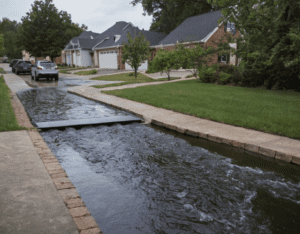
collects and transports rainwater, stormwater, and runoff from roofs, roads, pavements, and other surfaces. The surface water is usually clean and does not need to be treated before being released into a water body, such as a river, lake, or ocean. The surface water drainage system connects to a storm drain or a soakaway for disposal.
-
Combined drainage system

combines foul and surface water drainage systems into one pipe. The advantage of this system is that it reduces the number of pipes and simplifies installation and maintenance. The disadvantage is that it increases the risk of flooding and contamination, as the surface water can overload the sewer system or carry pollutants into the water body.
The combined drainage system connects to a sewer system for disposal. In contrast, other systems use separate pipes for sanitary sewer, storm sewer, and house plumbing to address their individual issues and potential leaks.
The drainage system works by gravity, meaning the water flows from higher to lower levels. The pipes are sloped at an angle to the soil to ensure a constant water flow towards the outlet.
The pipes are also vented to allow air to enter and exit the system, which prevents pressure build-up and sewer gas accumulation. The pipes are fitted with traps, valves and cleanouts to prevent clogs, leaks, and odors.
Drainage System Terminology
A drainage system is a network of channels, pipes, and other structures that collect and transport water from a catchment area to a disposal point. A catchment area is an area of land that contributes surface water to a drainage system.
Drainage systems can be classified into different types based on the source and nature of the water they carry, such as:
- Combined sewer: A sewer that carries foul sewage (domestic and industrial wastewater) and surface water (rainfall-runoff) in the same pipe.
- Separate sewer: A sewer that carries either foul sewage or surface water, but not both.
- Storm sewer: A sewer that carries only surface water from impervious surfaces such as roads, roofs, and pavements.
- Sanitary sewer: A sewer that carries only foul sewage from domestic and industrial sources.
- CSO (combined sewer overflow): An outlet from a combined sewer that discharges excess diluted sewage to another location (such as a watercourse or a tank) when the capacity of the sewer or the sewage treatment plant is exceeded under storm flow conditions.
- Infiltration: The unintended entry of groundwater into a drainage system through defects in pipes, joints or manholes. Infiltration can reduce the capacity and efficiency of the drainage system and increase the volume of sewage to be treated.
- Inflow: The deliberate or accidental entry of surface water into a sanitary sewer, such as from roof drains, sump pumps, or cross-connections. Inflow can also reduce the capacity and efficiency of the drainage system and increase the volume of sewage to be treated.
- Leak: Identifying and confirming plumbing issues related to sanitary sewer leaks, storm sewer leaks, and water table issues in old houses. Locating and diagnosing leaks in the plumbing system is crucial for maintaining the integrity and efficiency of the drainage system.
- Attenuation: The reduction of peak flow and increased duration of a flow event in a drainage system by storing runoff in ponds, tanks or other structures and releasing it at a controlled rate.
- Balancing pond: A pond designed to attenuate flows by storing runoff during the peak flow and releasing it at a controlled rate during and after the peak flow has passed.
- Anti-flooding device: A device designed to be installed in gravity drains or sewers to prevent backflow from a sewer towards a property or a group of properties in case of flooding.
Components of a House Drain System
Let’s dissect the system further to understand the key components. Each part plays a unique role in ensuring an efficient and well-functioning drainage system.
It is advisable to consult a professional plumber to ensure proper understanding and resolution of plumbing layouts and problems within your home.
Main Sewer
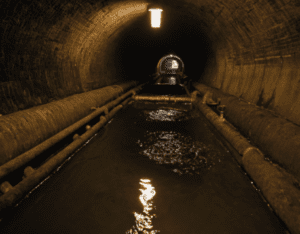
The main municipal sewer line is the backbone of the entire drainage system. It collects wastewater from various drains in the house and transports it to the city sewer line or a septic tank. The sewer clean out is crucial for maintaining the main sewer line, allowing for regular cleaning and quick access during emergencies or significant clogs.
Branch Drains
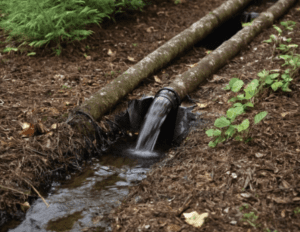
Branch drains are the smaller pipes connected to the basement and main sewer. They collect wastewater from different areas of the house, such as the kitchen, bathroom, and laundry room.
Stacks
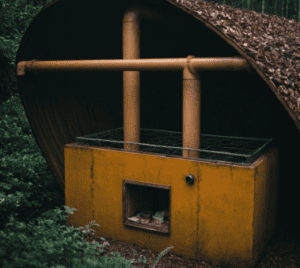
Stacks are vertical pipes that carry waste and water from branch drains to the main sewer. They usually run above ground and through the walls of the house.
Traps
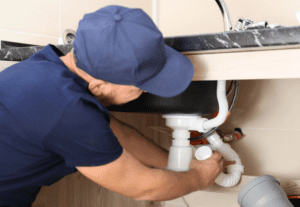
Traps are curved pipe sections beneath sinks, showers, and other drain openings. They are designed to hold a small amount of water to create a seal with soil pipe, preventing sewer gases from entering the house.
Vents
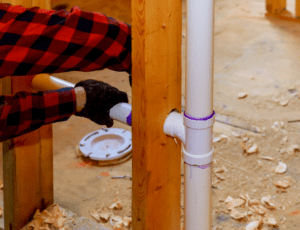
Vents are pipes that allow air to enter the plumbing system. They help balance the pressure in the system, facilitating the smooth flow of water and waste.
Clean-Outs

Clean-outs are accessible points in the drain system designed to allow for the removal of blockages. They usually have a removable cap.
Diagram of a House Drain System
Understanding a house drain system diagram can help visualize how the components branch drain lines work together.

The diagram shows the placement and connection of the main drain components in a house drain system..
Maintenance of the House Drain System
Maintaining the house drain system is essential for the occupants and the environment’s health and safety. A poorly maintained drain system can cause problems such as:
- Slow drainage or standing water in sinks, tubs, or showers
- Gurgling noises or foul smells from drains
- Sewage backups or overflows in toilets or sinks
- Water damage or mold growth in walls, floors, or ceilings
- Sewer gas leaks or explosions
- Contamination of groundwater or surface water
Drainage plumbing diagrams are crucial for maintenance and compliance, as they help homeowners and contractors determine the layout of drainage plumbing on a property.
To prevent these problems, homeowners should follow some basic tips for maintaining their house drain system:
- Avoid putting grease, oil, fat, coffee grounds, eggshells, hair, paper towels, sanitary products, diapers, or wipes down the drain. These items can clog the pipes and cause backups.
- Use a drain strainer or screen to catch food scraps, hair, and other debris from going down the drain. Clean the strainer or screen regularly.
- Run hot water down the drain after each use to remove residue or soap scum.
- Use baking soda, vinegar, or a natural enzyme-based cleaner to clear minor clogs and odors from drains. Avoid harsh chemicals or drain cleaners that can damage the pipes or septic system.
- Pour boiling water down the drain monthly to dissolve grease or fat buildup.
- Check for leaks or cracks in pipes, joints, traps, and vents. Repair any damage as soon as possible.
- Insulate exposed pipes in cold areas to prevent freezing and bursting.
- Keep trees and shrubs away from drain pipes to prevent root intrusion.
- Schedule a professional inspection and cleaning of the drain system every few years or as a plumber recommends.
Following these tips, homeowners can keep the main drain line their house drain system in good condition and avoid costly repairs or health hazards.
Frequently Asked Questions
1. What is the main function of a house drain system?
The main function of a house drain system is to collect and transport waste and water from the house to a city or municipal sewer, line or septic tank, thus maintaining sanitation and hygiene within the premises.
2. What can cause blockages in a house drain system?
Hair, grease, and food can cause blockages in drain line. Tree roots can also obstruct the sewer line. Flushing non-dissolvable items down the drains can be a factor..
3. How can I maintain the efficiency of my house drain system?
Regularly inspect and repair any leaks. Ensure traps contain water to stop sewer gases. Clean drains to avoid blockages. Manage vegetation near sewer lines to prevent root intrusion.
A house drain system is a testament to the marvels of modern engineering. It quietly performs its role, promoting a healthier living environment. By investing time to understand its parts and function, we equip ourselves with the knowledge to handle minor issues and appreciate the complexities of our everyday conveniences.
Homeowners can effectively address minor plumbing issues with a good knowledge of house drain systems, saving on expensive repairs. Moreover, by recognizing signs of problems early, one can promptly involve professionals to handle the situation, ensuring the longevity and efficiency of the home’s foundation drain system.
Undeniably, a well-maintained house drain system contributes to a comfortable and hygienic living environment. It’s a complex network drainage pipes that operates silently yet plays a vital role in maintaining the overall sanitation and comfort of the home.
Remember, being proactive rather than reactive about maintenance is always beneficial for a house drain system. Regular inspections and cleanings can help prevent system issues..
For homeowners, understanding the house drain system is more than being well-versed in your home’s infrastructure. It’s about ensuring the health and well-being of everyone in the house. After all, a clean home is a happy home!
Now, the next time you use your sink, shower, toilet trap or any other part of your house that requires drainage, you’ll have a new-found appreciation for the complex system that makes it all possible. Remember, each part, from the most negligible branch drain to the main sewer, has been meticulously designed to give you a hassle-free experience.
The power of understanding the house drain municipal sewer system, and its intricate design is in your hands. Let’s appreciate and care for these marvels of engineering that contribute significantly to our daily lives.
Final Thoughts
In the course of this article, we’ve explored various aspects of the house drainage system, a crucial part of any residential property. We’ve discussed fixture drain traps, which help retain water and prevent foul vapors from entering your home. Understanding the intricacies of these systems is vital, as they play a key role in the quality of life in your home. However, dealing with this complex network of pipes and traps is no easy task. In fact, it commonly requires the expertise of a licensed master plumber.
We’ve covered the main drain lines which serve to carry used water and waste away from your home, all the way to the public sewer system. We’ve also discussed the importance of maintaining your home’s main house trap and the problems that can arise when it’s clogged or blocked. The vertical pipe, also known as a stack, was highlighted as a key part of the plumbing fixture, providing necessary ventilation.
The need for an effective storm water drainage solution was also discussed, touching upon the installation of a French drain or a catch basin in your back yard. The construction of a French drain involves digging a trench filled with gravel and a drain pipe, designed with perforations to catch and divert excess water. The catch basin, on the other hand, serves as a collection point for standing water, stopping it from seeping into your basement floor and surrounding soil. This discussion was meant to familiarize homeowners with the workings of their home drainage system and provide a list of steps that can be taken to avoid water damage.
Conclusion
In conclusion, maintaining the proper functioning of your home’s plumbing and drainage systems is a responsibility every homeowner should take seriously. Remember, if a problem does arise, it’s often difficult, sometimes impossible, to rectify the situation without the services of a skilled and licensed master plumber. Therefore, if you spot signs of blockage or leakage, don’t hesitate to seek professional help.
Preventive measures, like cleaning drains, pipes, gutters, and catch basins, will save you from future headaches and expenses. Regular checkups, such as inspections of sewer lateral connections and drain cleanings, are essential.
In the end, a well-maintained drainage system serves the individual homeowner. It contributes to the overall health and well-being of the broader community by ensuring that waste and stormwater are responsibly handled and drained adequately into the municipal sewer system.
So whether you’re just starting a new building project, planning on replacing outdated plumbing in older homes, or simply trying to learn more about your home’s plumbing fixtures and systems, this article has hopefully provided valuable insights.
As we look to the future, we must continue to improve and adapt our residential drainage systems to effectively manage water from the moment it enters our homes to the point it leaves, ensuring its safe passage every step of the way.






















